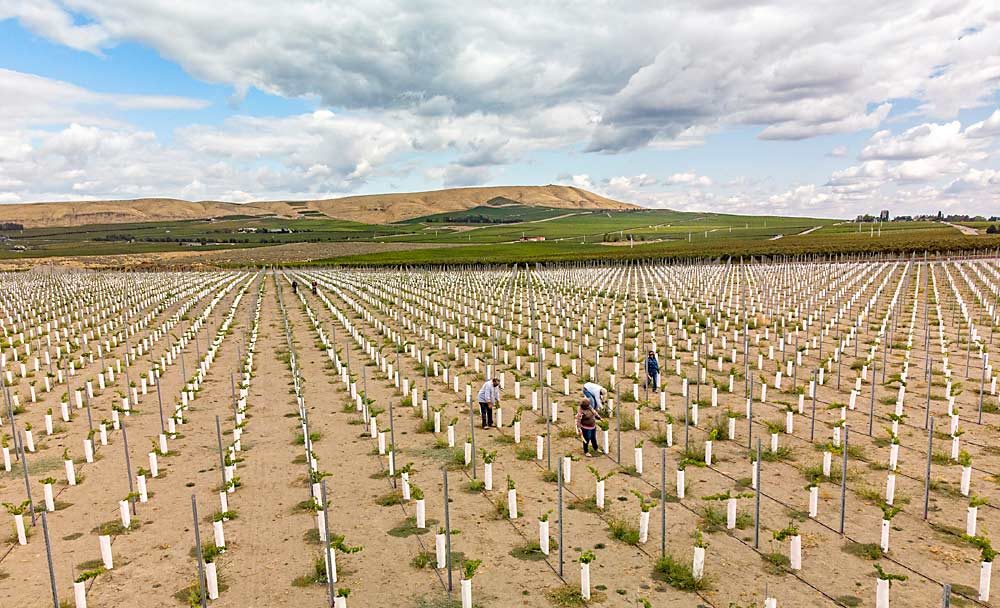
Around the globe, wine grape growers manage phylloxera with resistant rootstocks. Such rootstocks are rare in Washington, where growers have long enjoyed growing on own-rooted vines in the absence of root pest pressure, but they are not unheard of.
Research and commercial vineyard trials — some dating back 20 years and some just planted — offer insight into how rootstocks will perform in Eastern Washington and which ones might be the best fit.
“Tell growers not to be afraid of rootstocks,” said Washington State University professor of viticulture Markus Keller. “Ninety percent of the world’s grapes are planted on maybe a dozen or so rootstocks.”
His research, conducted in a trial block in Prosser in collaboration with WSU winemaker Jim Harbertson about a decade ago, showed no discernable differences in wine quality of Chardonnay, Merlot and Syrah from that block. While most grafted vines lower the vigor and productivity somewhat compared to own-rooted vines, it’s a moderate effect growers will be able to manage well with existing irrigation programs, he said.
That trial block was pulled last year, but his colleague, extension viticulturist Michelle Moyer, is in the midst of evaluating five more rootstocks for their performance against nematodes, the other major reason most wine regions opt for rootstocks.
Broadly speaking, phylloxera prefer more clay soils and do not thrive in sandy soils. However, nematodes do.
“In both cases, rootstocks are the answer,” Keller said. “So, when you have a vineyard, it’s slowly starting to decline and you have to think about replanting, you should think about rootstocks.”
The major concerns when it comes to rootstocks are the price, with grafted vines costing about twice as much as own-rooted vines, and cold injury. If there is a killing freeze, own-rooted vines can be retrained from the roots, but grafted vines cannot, leaving growers to replant or regraft.
The solutions are straightforward and commonly practiced in colder wine regions — burying spare canes and hilling up over the graft — but it’s the extra management practices that add extra cost, Keller said.
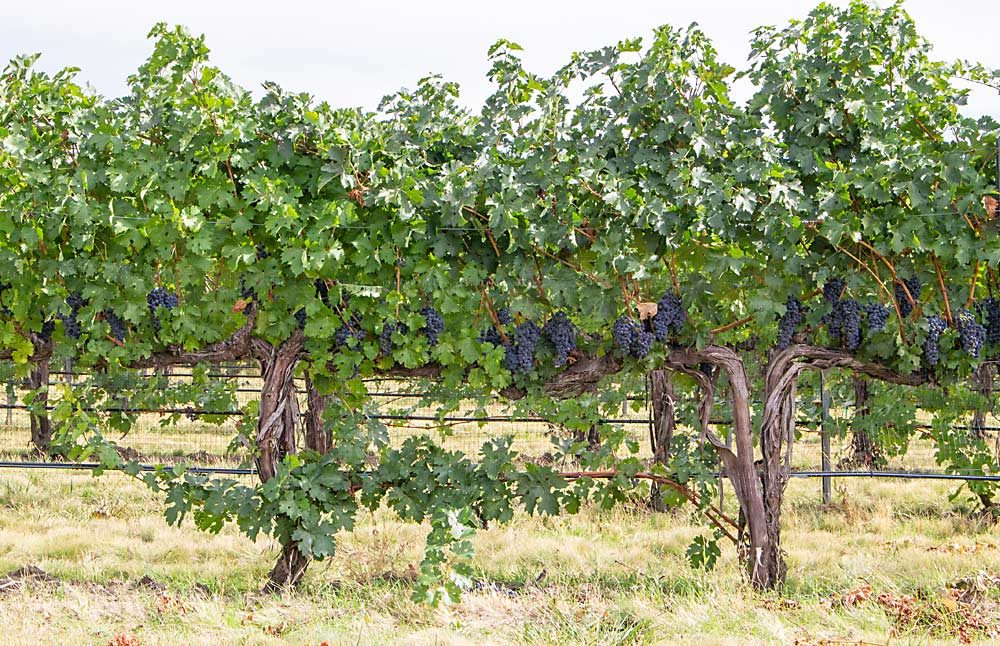
“The rootstocks are all adapted to colder temperatures than our vinifera are. If anything gets killed, it’s the weakest link, which is the wine grape on top,” he said.
Evaluating rootstock options seems daunting for the uninitiated, but Keller said in Washington’s deficit-irrigated systems, most of the differences in terms of rootstock performance will be minor.
There’s lots of published information about rootstocks out there, from nursery tables to books, but it’s hard to glean exactly how a rootstock will perform in one location from elsewhere, Keller cautioned. Some of the commonly cited tables include information from potted vines or rootstocks that are growing ungrafted.
Growers should just plan to try out three to five popular, proven rootstocks and see what they like best on their own sites, he said. The differences will be in terms of nuance, not planting mistakes.
Commercial plantings
At Klipsun Vineyard in the Red Mountain AVA, 60 acres of new vines were planted on rootstocks this past summer.

“Ironically, the decision wasn’t based on phylloxera,” said Doug Fletcher, a consultant (and recently retired vice president for winemaking and viticulture) for the Terlato Wine Group, which bought Klipsun in 2017. Instead, high levels of root knot nematode that had built up over decades posed a risk to new plantings, so he wanted to replant on nematode-resistant roots — what he called the most sustainable solution.
Selecting which rootstocks to plant his Cabernet Sauvignon on posed a bit of a challenge, he said, because while rootstocks are evaluated in California for resistance to the southern root-knot nematode, in Washington it’s a cousin with a different life cycle, the northern root-knot nematode, that causes the damage. Much less is known about how rootstocks interact with the northern nematode, although Moyer’s research trials aim to find out.
Moreover, the rootstocks that are resistant to the root-knot nematode common in California are used in California’s Central Valley, where they don’t grow a lot of high-end Cabernet, Fletcher said.
He elected to go with two rootstocks he knows do well with Cabernet, 1103P and 3309C, along with 1616C, which is known for nematode resistance, and two relative newcomers from California breeding programs focused on nematode resistance, RS3 and GRN4. All are resistant to phylloxera.
“The whole rest of the world is using these rootstocks,” Fletcher said. “Everyone (in Washington) is talking, ‘Oh my god, we are going to have to use rootstocks now,’ but maybe it’s not all bad. I think it’s good.”
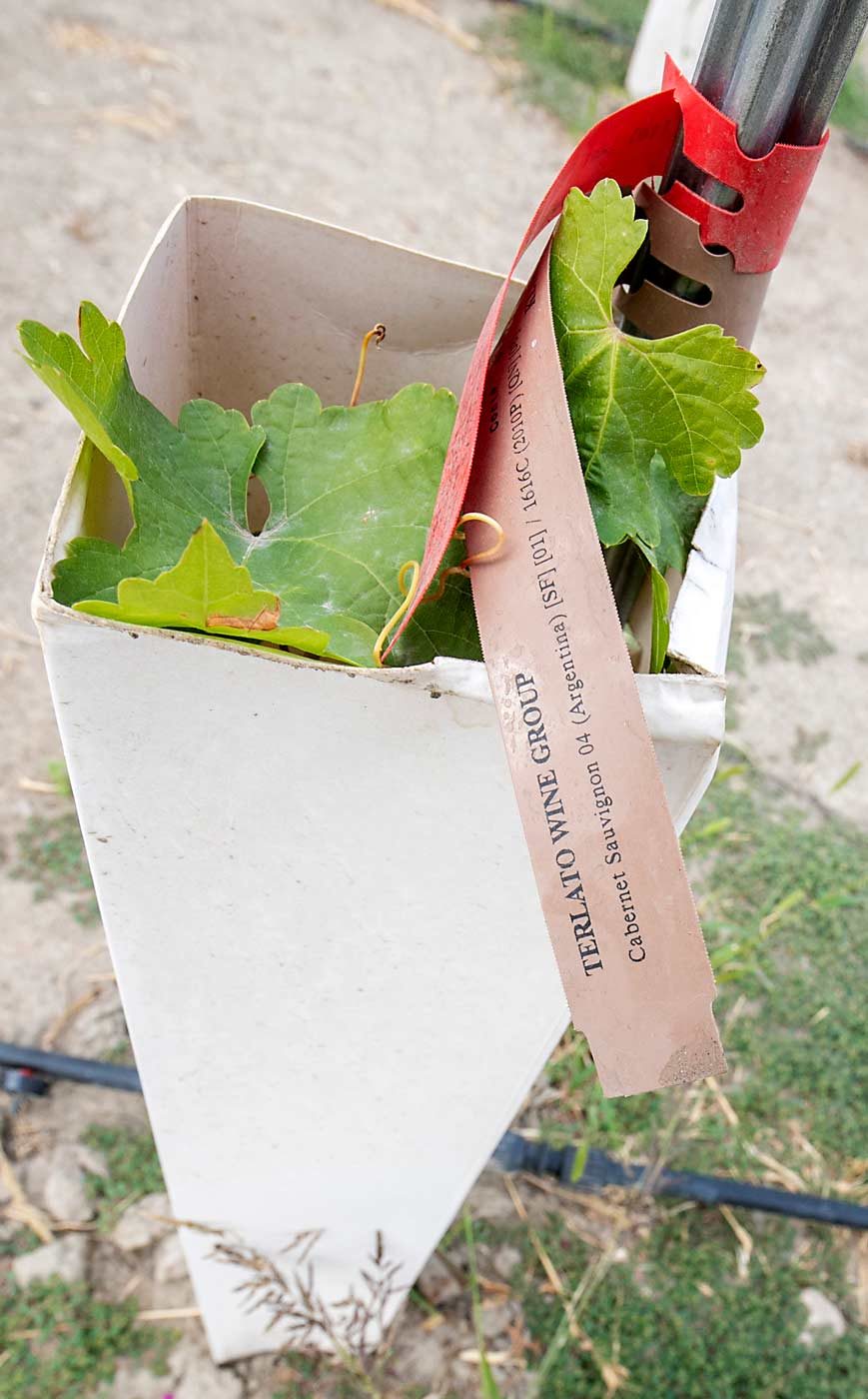
When growers plant own-rooted Syrah, Cabernet or Merlot, they are stuck with that intrinsic vigor, but if they are clever and examine their soil types and pick appropriate rootstocks, “it’s an advantage,” he said.
He set up the planting, including a randomized controlled trial that compares the rootstocks with own-rooted vines, in both fumigated and nonfumigated blocks, which Moyer plans to track. Results over the next five years should inform his next replanting decisions at Klipsun, Fletcher said.
In Walla Walla, several growers have already planted rootstocks on a trial basis. Pepper Bridge Winery planted a block on rootstocks in 2007, including 3309 and 101-14, said winemaker Jean-François Pellet.
“Coming from Europe, phylloxera is just part of farming,” he said. “Yes, rootstocks will change the character of the wines, absolutely, but we can make them better.”
Figgins Family Wine Estates planted a rootstock trial back in 2003 “just to try it and learn in case this day ever came,” said viticulturist Jason Magnaghi. Today, he has both Cabernet Sauvignon and Merlot growing on Riparia and 3309 at the Loess Vineyard on the east side of Walla Walla.
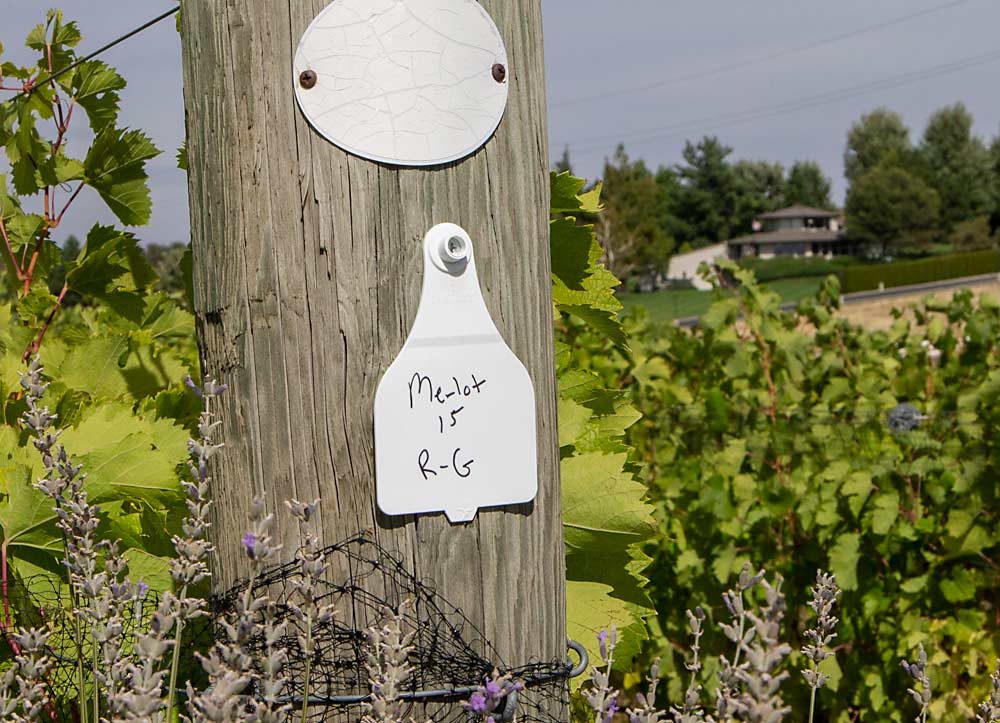
“Honestly, I almost forget these are grafted anymore,” he said when asked about the challenge of managing grafted vines. The main concern is cold damage, but he practices cane burial across the entire vineyard anyway.
“We do it because we’re a 100-percent estate winery, and so that’s our crop insurance,” Magnaghi said. “In my 19 years, we’ve used it one time to supplement a crop.”
As far as the rootstocks are concerned, he’s learned to adjust to their water needs. The Riparia reduces vine vigor, so he added additional emitters to the drip line so that they’ll perform the same as the own-rooted vines in the block. But on wetter sites, that would be an advantage.
“For us personally, we farm on both sides of the Walla Walla Valley and we go from 6 inches of rain a year to 20 on the east side. That’s vastly different needs, and rootstocks can help us meet those needs,” Magnaghi said. On the dry, southern edge of the valley at SeVein Vineyards, he planted two rootstocks known for their drought tolerance: 1103P and 101-14.
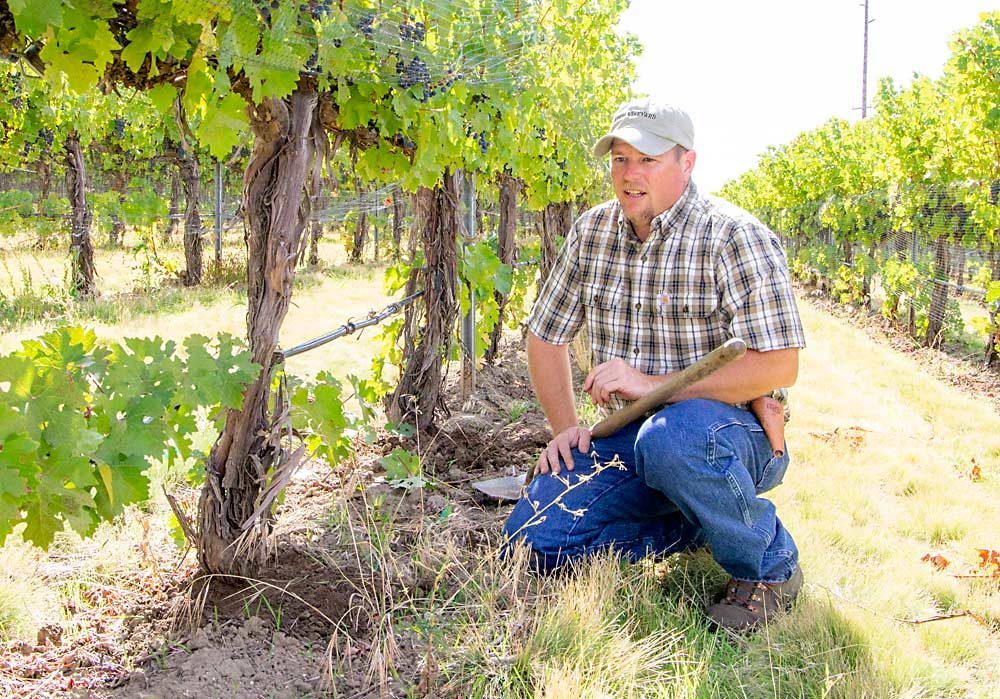
At the moment, he has no new plantings planned, but said that he would want to evaluate several options. Pellet, who was planning a new planting anyway, decided recently to go with rootstocks. That doubled the price of the vines, but in the big picture, that’s only about a 10-percent increase in the planting cost, he said.
He hopes to learn from this planting, and others around the region, to inform phylloxera-driven replanting down the road. Growers and researchers agree that there’s time to learn.
“Every region has rootstocks, it’s just about matching them to your conditions,” Magnaghi said. “We’ve got a lot of playing around to do.” •
—by Kate Prengaman






Leave A Comment